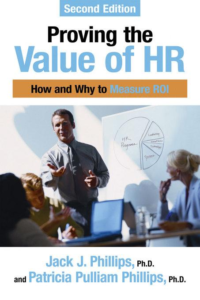“Proving the Value of HR” – A Must Read For HR Professionals to Sell the Value of HR
While talk of the employee experience has become a common refrain, the reality is that HR professionals are most often required to provide a persuasive business case wherever and whenever resources are required.
So, while people are any businesses’ greatest investment, a solid return on investment (ROI) remains the fixed language of business. However, while hard costs around new equipment lend themselves to straightforward computation and sign-off — X dollars to purchase with output x4 in the first annum — shaking monies free for something as apparently nebulous as the employee experience is more challenging.
Supporting the Fourth Pillar Of Business – HR
Compared to the other traditional pillars of business — operations, sales and marketing, and finance — HR has always had a more challenging scenario. Operations has always been the simplest function for calculating ROI. Essentially, and grossly simplified, they are measured by how well they can maintain or reduce the cost of manufacture/production vis-à-vis the desired sale price of the goods. The bigger the gap, the more profitable the company. A zero or negative gap means the organization’s survival is in jeopardy.
Sales and marketing are validated by increases in new clients and the volume of sales increases from reporting period to reporting period, while finance’s effectiveness is measured by tax savings, accuracy of forecasting and advice on effective utilization of the company’s resources.
However, and what is gaining more understanding is that while these are all impressive strategies, their execution and ROI are all dependent on one common resource — PEOPLE. Yet, human resource departments have not had the recognition they richly deserve for having sustained this singular resources from the start.
A Committed Focus on People 
Long before talk of the employee experience, the HR professional’s focus has been people. Admittedly, not all have understood the language of business, nor possessed the moxie to step up to the board table and demonstrate their value — nor the ROI for the programs they have successfully implemented or direly need.
Fortunately, the days of HR teams labouring in the shadow of other departments, are at an end, as one book does manage to capture the elusive datum needed. Jack and Patricia Pulliam Phillips’ book, Proving The Value of HR: How and Why to Measure ROI, 2nd edition, is brilliant.
Without getting into the formula for the ROI of HR, rest assured there is one, albeit with a few variables. That said, Proving the Value of HR is a must read for any HR professional who wants to lead, not follow. Loaded with innovative people ideas, this would be just as valuable as a gift for CEOs and upper management, putting the focus of value where it belongs.
Beginning with a story told by a the great Jack Welch as a metaphor for why a CEO should be forging stronger ties with their head of HR. (I had the great privilege to meet Jack Welch at an awards ceremony in 1998 in Colorado and his stories makes it easy to understand his enormous success.)
A Guide to Accountable Success
In this second edition, the Phillips give a very thorough, step-by-step process of what is needed to prove the value of HR’s contribution to the organization’s bottom line. Each chapter is a treasure trove of information from the first chapter, which delves into what is termed the “Accountability Crisis.” Only one chapter in, the book lays out the concerns and issues around HR contributions, makes the case for more HR measurement and even provides a quiz to test your ROI readiness.
From there, each chapter expands on the knowledge accumulated. The book covers everything from helping you:
- Understand the ROI methodology and helping you prepare for it,
- Navigate the intricate processes of collecting data,
- Isolate the effects of the program; and
- Monetize the data;
- Before moving right into how to how to measure the intangibles, communicating and using the evaluation data, and closing with implementing the process.
In Case of Doubt
If you are someone who needs to be shown that the outcome is worth the work, start by reading Chapter 11, which is a case study, written as a teaching exercise, so it engages you as you go through it. Each step of the case study is clear and logically laid out, like the book. The return on investment is one, I believe, any consultant or HR head would be thrilled to present to the CEO or Executive Committee.
In my personal opinion, this should be a textbook in all HR training. It gives practitioners the tools and the confidence they need to take their rightful place in the C-suite—and justify a better employee experience for everyone.
Akeela Davis is a productivity, engagement and cultural strategist at Courageous Business Culture. Using Motivational Map diagnostic surveys, she co-creates solutions for optimal outcomes.









